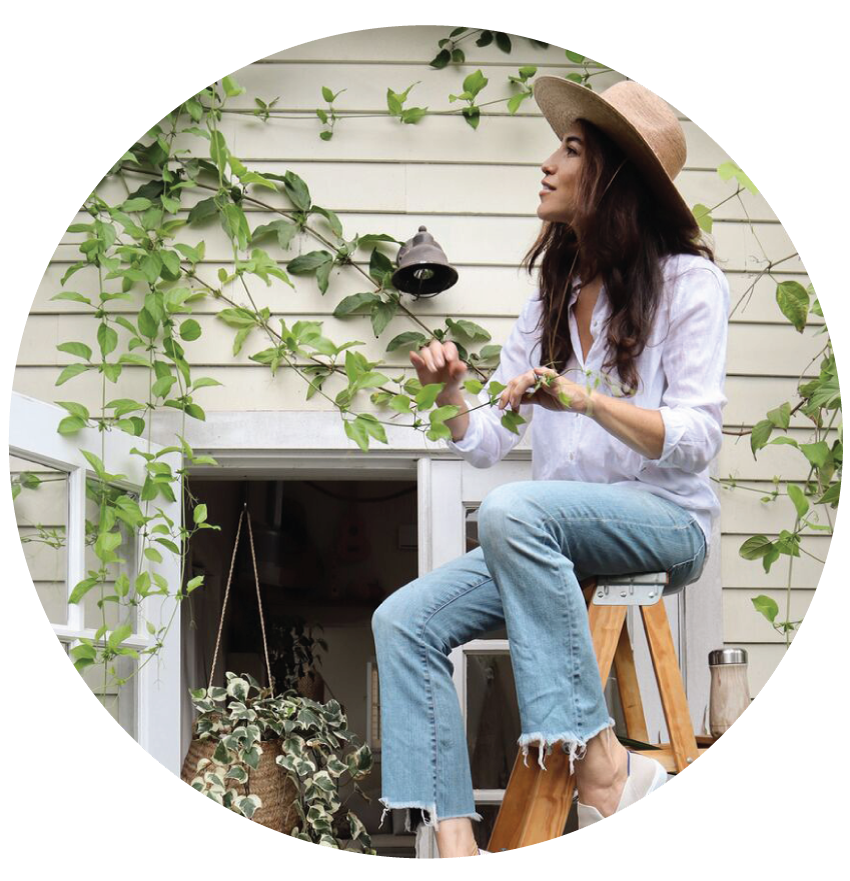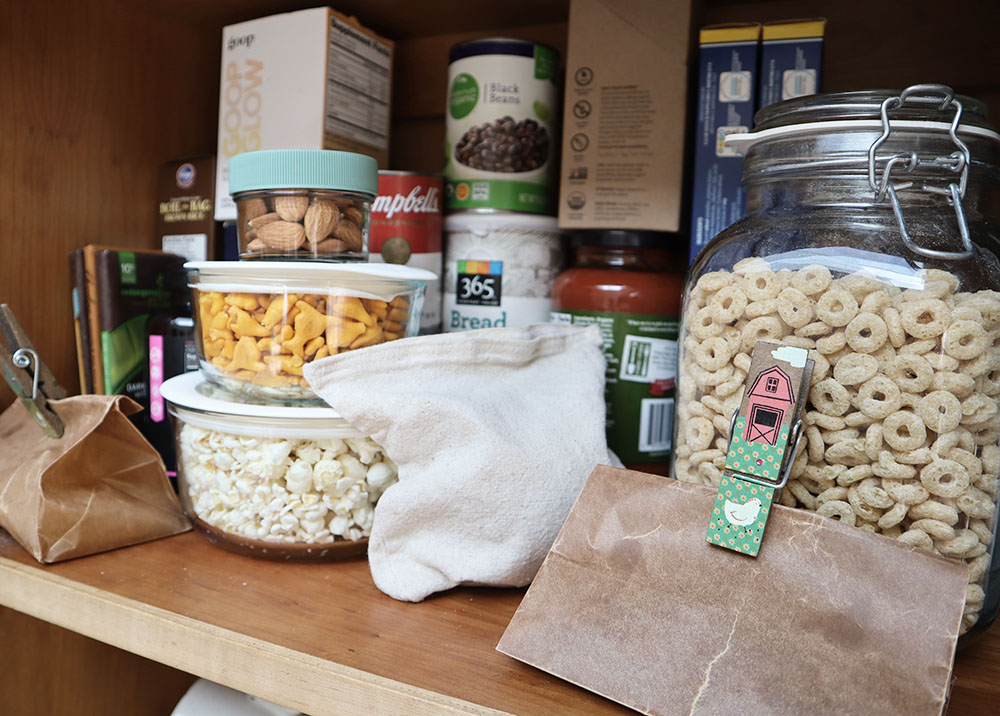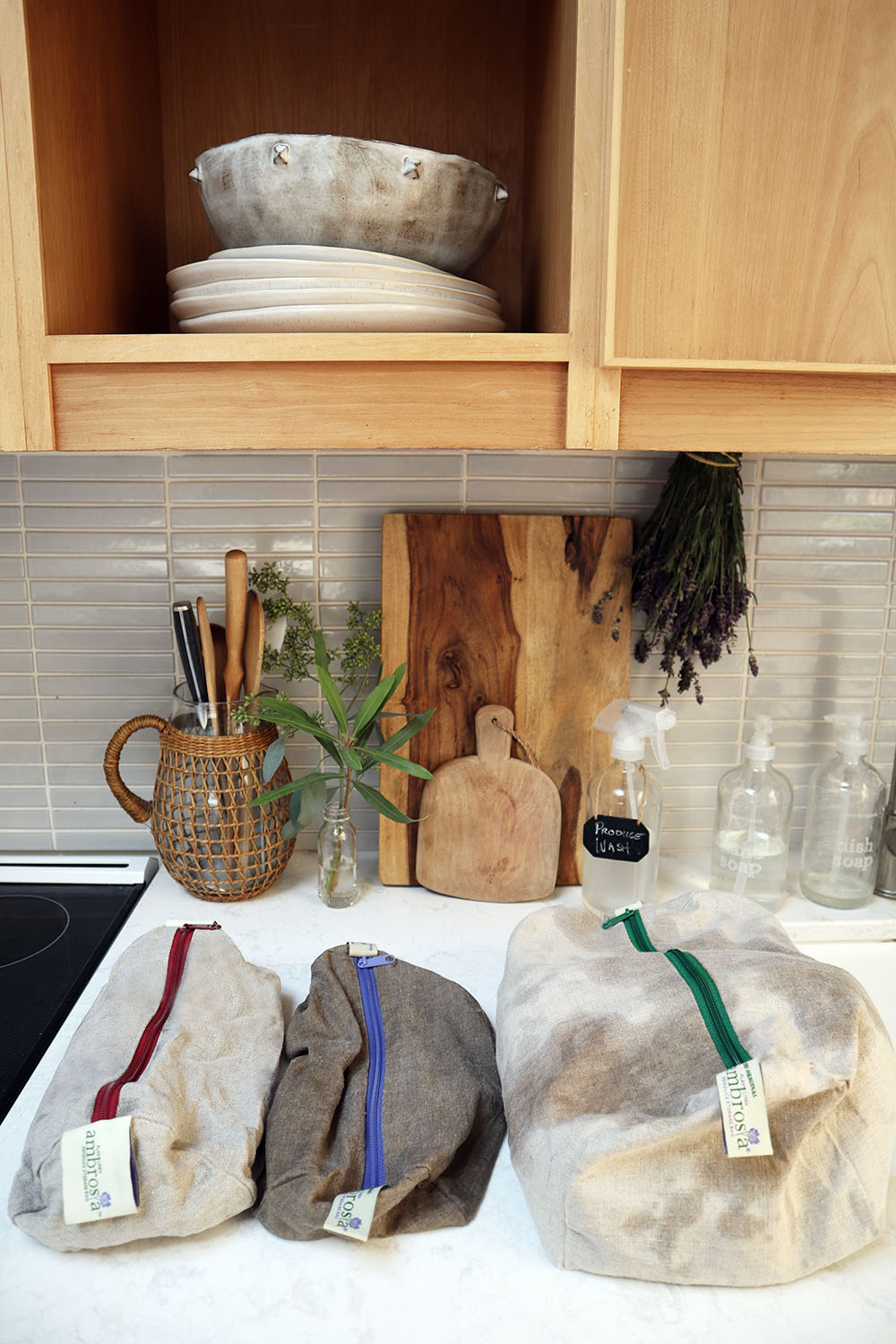A Look Inside: Small Space Food Storage
We’re often asked how we manage to accommodate food for 2 adults, 1 toddler and 2 dogs in our tiny, full-time home/office. This post explains how we do it. It’s a setup that works well for how we cook and how we shop, which are factors that obviously vary wildly from household to household.
Adam and I keep our dry goods in the double-door cabinet above the stove. We make very little from scratch, so the ingredients we need to have on-hand are limited. Other everyday food is either in the fridge or placed in various food storage containers on the countertops. We replenish our groceries every few days (rather than, say, once per week,) because here in Venice we have exceptional access to farmers markets. We don’t buy in large quantities, and go out to get what we need, when we need it.
There are four different farmers markets nearby, and they take place on staggered days of the week, all within walking or biking distance of the Cottage. There’s a wonderful organic grocery store just a short stroll away, too. As such, we buy locally and on-demand. We try to turn shopping into a family activity whenever possible, encouraging West to cart around his market basket alongside ours, and opting to take the scenic route (via bike, foot or wagon) on the way back home.
In the cottage, Adam is the cook and handles most of the food in the house. (I make breakfast, but I’m pretty much a disaster at cooking much else.)
He usually plans out three days worth of meals every time we shop, and that loose pattern helped us determine how to best use the kitchen spaces we have to suit our particular needs.
Despite the fact that our new fridge is still compact, it actually holds a surprising amount of items. We follow a pescatarian diet, so that cuts back on the need to buy and store certain types of food. We also make our own sparkling water to cut back on waste and preserve space, and we rarely buy juice or any other beverages, so that frees up inches as well. (We keep our SodaStream on the counter next to the sink, where we use it multiple times per day.)
We keep most of our dog food refrigerated, as it’s perishable. But we also have a kibble tin on the bottom cubby of a nearby shelf:
We have reusable bowl covers in lieu of plastic cling wrap, and these protect our leftovers via our standard bowls in the fridge. The linen+cotton covers roll or fold up tightly when not in use, requiring less drawer space than a box of plastic wrap.
To keep fresh produce in good condition for as long as possible, thereby cutting back on spoiled/wasted food and saving money, we use a set of flax linen Ambrosia Bags, which are incredible. There are 4 to a complete set, each of which is meant to be used in a different way depending on its contents.
Not only are Ambrosia Bags sustainable, eco-friendly, and lovely to see and touch, but they preserve the life and freshness of veggies, herbs, mushrooms and berries. This means we save money by buying less food, as we no longer accidentally waste precious produce that have gone bad.
The “damp bags” hydrate vegetables and herbs 24/7 and extends freshness 2-3 times longer than plastic bags while the “dry bags” slowly dehydrate keeping mushrooms from sliming and berries from molding.
Flax fibers absorb moisture well, allowing the damp bags to hold onto the moisture when stored inside the refrigerator drawer, and even releasing moisture back out, keeping vegetables and/or herbs alive from continuous hydration, unlike other natural fibers or plastic bags. The linen also allows air to flow and in and out of the bags, keeping oxygen present and preserving the food’s freshness longer.
The Ambrosia Bags are simple to use and very easy to care for— just launder once a month, or as-needed.
Storing your vegetables:
Rinse & shake off excess water
Place wet veggies inside bag & close zipper
Store inside refrigerator vegetable drawer
Storing your herbs:
Gently rinse herbs and shake off excess water
Place herbs inside bag and close zipper
Store in refrigerator vegetable drawer
Storing your delicate greens:
includes spinach, arugula & packaged salad mixes
Remove plastic bag, place on towel
Discard aged or undesirable leaves
Hand sprinkle water over leaves
Gently place inside bag
Place inside refrigerator vegetable drawer
Keep bag moist at all times
Storing your mushrooms:
Remove plastic packaging
Put dry mushrooms into bag and close zipper
Place onto refrigerator shelf
Keep bag dry at all times
Storing your berries
Rinse berries (optional)
Put berries into bag and close zipper
Place onto refrigerator shelf
Keep bag dry at all times
* Protect delicate raspberries/blackberries place container inside berry bag.

















